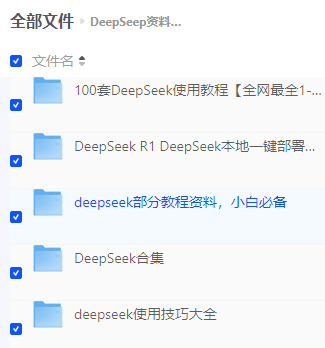Netty实现单通道并发读写,即多路复用
🧑 博主简介:CSDN博客专家,历代文学网(PC端可以访问:https://literature.sinhy.com/#/?__c=1000,移动端可微信小程序搜索“历代文学”)总架构师,
15年工作经验,精通Java编程,高并发设计,Springboot和微服务,熟悉Linux,ESXI虚拟化以及云原生Docker和K8s,热衷于探索科技的边界,并将理论知识转化为实际应用。保持对新技术的好奇心,乐于分享所学,希望通过我的实践经历和见解,启发他人的创新思维。在这里,我希望能与志同道合的朋友交流探讨,共同进步,一起在技术的世界里不断学习成长。
技术合作请加本人wx(注明来自csdn):foreast_sea


Netty实现单通道并发读写,即多路复用
引言:Netty共享通道连接池——突破传统连接模型的性能革命
在传统网络编程中,TCP连接常被视为单线程独占资源,这种设计在高并发场景下面临着严峻的性能瓶颈:每个连接只能串行处理请求,导致资源利用率低下,连接数量激增带来巨大开销。Netty共享通道连接池应运而生,它颠覆性地实现了单TCP连接的多线程并行读写,将连接复用提升到全新维度。
下面我们将实现一个高性能的连接池,支持多个线程共享同一个通道(每个通道最大共享线程数可配置),并确保高并发获取和释放连接的效率。
一、共享连接池实现:支持多线程共享同一通道
核心实现
import io.netty.bootstrap.Bootstrap;import io.netty.channel.Channel;import io.netty.channel.ChannelFuture;import io.netty.channel.ChannelInitializer;import io.netty.channel.EventLoopGroup;import io.netty.util.concurrent.*;import java.util.Queue;import java.util.concurrent.ConcurrentHashMap;import java.util.concurrent.ConcurrentLinkedQueue;import java.util.concurrent.TimeUnit;import java.util.concurrent.atomic.AtomicInteger;import java.util.concurrent.locks.LockSupport;public class MultiThreadSharedChannelPool { // 配置参数 private final int maxConnections; private final int maxThreadsPerChannel; private final long acquireTimeoutMillis; // 核心数据结构 private final Queue<SharedChannel> availableChannels = new ConcurrentLinkedQueue<>(); private final ConcurrentHashMap<Channel, SharedChannel> allChannels = new ConcurrentHashMap<>(); private final AtomicInteger totalConnections = new AtomicInteger(0); private final EventLoopGroup eventLoopGroup; private final Bootstrap bootstrap; // 等待队列管理 private final Queue<Promise<SharedChannel>> pendingAcquires = new ConcurrentLinkedQueue<>(); public MultiThreadSharedChannelPool(Bootstrap bootstrap, int maxConnections, int maxThreadsPerChannel, long acquireTimeoutMillis) { this.bootstrap = bootstrap; this.eventLoopGroup = bootstrap.config().group(); this.maxConnections = maxConnections; this.maxThreadsPerChannel = maxThreadsPerChannel; this.acquireTimeoutMillis = acquireTimeoutMillis; } /** * 获取共享通道(异步) */ public Future<SharedChannel> acquire() { Promise<SharedChannel> promise = eventLoopGroup.next().newPromise(); acquireInternal(promise); return promise; } private void acquireInternal(Promise<SharedChannel> promise) { // 尝试从可用通道获取 SharedChannel channel = tryAcquireAvailableChannel(); if (channel != null) { promise.setSuccess(channel); return; } // 尝试创建新连接 if (tryCreateNewConnection()) { // 创建成功后重新尝试获取 eventLoopGroup.schedule(() -> acquireInternal(promise), 10, TimeUnit.MILLISECONDS); return; } // 加入等待队列 if (acquireTimeoutMillis > 0) { scheduleAcquireTimeout(promise); } pendingAcquires.offer(promise); } private SharedChannel tryAcquireAvailableChannel() { for (SharedChannel channel : availableChannels) { if (channel.tryAcquire()) { // 如果通道已满,从可用队列移除 if (!channel.isAvailable()) { availableChannels.remove(channel); } return channel; } } return null; } private boolean tryCreateNewConnection() { if (totalConnections.get() >= maxConnections) { return false; } if (!totalConnections.compareAndSet(totalConnections.get(), totalConnections.get() + 1)) { return false; } // 异步创建连接 bootstrap.connect().addListener((ChannelFuture future) -> { if (future.isSuccess()) { Channel ch = future.channel(); SharedChannel sharedChannel = new SharedChannel(ch, maxThreadsPerChannel); allChannels.put(ch, sharedChannel); // 新连接立即可用 availableChannels.offer(sharedChannel); processPendingAcquires(); // 添加关闭监听 ch.closeFuture().addListener(f -> { allChannels.remove(ch); totalConnections.decrementAndGet(); }); } else { totalConnections.decrementAndGet(); } }); return true; } private void processPendingAcquires() { while (!pendingAcquires.isEmpty()) { Promise<SharedChannel> promise = pendingAcquires.poll(); if (promise == null || promise.isDone()) continue; SharedChannel channel = tryAcquireAvailableChannel(); if (channel != null) { promise.setSuccess(channel); } else { pendingAcquires.offer(promise); break; } } } private void scheduleAcquireTimeout(Promise<SharedChannel> promise) { eventLoopGroup.schedule(() -> { if (!promise.isDone() && pendingAcquires.remove(promise)) { promise.tryFailure(new TimeoutException(\"Acquire timeout\")); } }, acquireTimeoutMillis, TimeUnit.MILLISECONDS); } /** * 释放共享通道 */ public void release(SharedChannel channel) { channel.release(); if (channel.isAvailable()) { // 如果变为可用状态,加入可用队列 availableChannels.offer(channel); // 唤醒等待请求 processPendingAcquires(); } } /** * 共享通道包装类 */ public static class SharedChannel { private final Channel physicalChannel; private final AtomicInteger usageCount = new AtomicInteger(0); private final int maxThreads; public SharedChannel(Channel physicalChannel, int maxThreads) { this.physicalChannel = physicalChannel; this.maxThreads = maxThreads; } public Channel getChannel() { return physicalChannel; } public boolean tryAcquire() { while (true) { int current = usageCount.get(); if (current >= maxThreads) return false; if (usageCount.compareAndSet(current, current + 1)) { return true; } } } public void release() { usageCount.decrementAndGet(); } public boolean isAvailable() { return usageCount.get() < maxThreads && physicalChannel.isActive(); } public int getUsageCount() { return usageCount.get(); } } // 统计信息方法 public int getAvailableChannels() { return availableChannels.size(); } public int getActiveChannels() { return allChannels.size() - availableChannels.size(); } public int getTotalConnections() { return totalConnections.get(); } public int getPendingAcquires() { return pendingAcquires.size(); }}使用示例
// 1. 创建Netty引导Bootstrap bootstrap = new Bootstrap() .group(new NioEventLoopGroup()) .channel(NioSocketChannel.class) .handler(new ChannelInitializer<Channel>() { @Override protected void initChannel(Channel ch) { // 初始化管道 } });// 2. 创建连接池MultiThreadSharedChannelPool pool = new MultiThreadSharedChannelPool( bootstrap, 20, // 最大物理连接数 8, // 每个连接最大共享线程数 5000 // 获取超时时间(毫秒));// 3. 获取共享通道pool.acquire().addListener((Future<MultiThreadSharedChannelPool.SharedChannel> future) -> { if (future.isSuccess()) { MultiThreadSharedChannelPool.SharedChannel sharedChannel = future.getNow(); try { Channel channel = sharedChannel.getChannel(); // 4. 使用通道 channel.writeAndFlush(request).addListener(writeFuture -> { // 处理响应... }); } finally { // 5. 释放通道 pool.release(sharedChannel); } } else { // 处理获取失败 }});// 6. 关闭连接池Runtime.getRuntime().addShutdownHook(new Thread(() -> { // 实际应用中需要更优雅的关闭 bootstrap.config().group().shutdownGracefully();}));二、关键性能设计
1. 高性能无锁队列
// 使用并发性能最好的队列private final Queue<SharedChannel> availableChannels = new ConcurrentLinkedQueue<>();// 使用CAS操作更新使用计数public boolean tryAcquire() { while (true) { int current = usageCount.get(); if (current >= maxThreads) return false; if (usageCount.compareAndSet(current, current + 1)) { return true; } }}2. 智能连接创建策略
private boolean tryCreateNewConnection() { // 双重检查避免过度创建 if (totalConnections.get() >= maxConnections) return false; // CAS保证原子性 if (!totalConnections.compareAndSet(current, current + 1)) { return false; } // 异步创建连接 bootstrap.connect().addListener(future -> { if (future.isSuccess()) { // 添加新通道 } else { // 回滚计数 totalConnections.decrementAndGet(); } }); return true;}3. 高效等待队列处理
private void processPendingAcquires() { while (!pendingAcquires.isEmpty()) { Promise<SharedChannel> promise = pendingAcquires.poll(); if (promise == null || promise.isDone()) continue; SharedChannel channel = tryAcquireAvailableChannel(); if (channel != null) { promise.setSuccess(channel); } else { // 放回队列并退出循环 pendingAcquires.offer(promise); break; } }}4. 连接预热机制
public void warmup(int connections) { for (int i = 0; i < Math.min(connections, maxConnections); i++) { tryCreateNewConnection(); }}三、高级功能扩展
1. 连接健康检查
public void startHealthCheck(long interval, TimeUnit unit) { eventLoopGroup.scheduleAtFixedRate(() -> { for (SharedChannel sc : allChannels.values()) { if (!sc.getChannel().isActive() && sc.getUsageCount() == 0) { // 关闭无效连接 sc.getChannel().close(); } } }, interval, interval, unit);}2. 负载监控
public void startMonitoring() { eventLoopGroup.scheduleAtFixedRate(() -> { System.out.println(\"=== 连接池状态 ===\"); System.out.println(\"总连接数: \" + totalConnections.get()); System.out.println(\"可用通道: \" + availableChannels.size()); System.out.println(\"等待请求: \" + pendingAcquires.size()); // 打印每个通道的使用情况 allChannels.forEach((ch, sc) -> { System.out.printf(\"通道 %s: 使用数=%d/%d%n\", ch.id(), sc.getUsageCount(), sc.maxThreads); }); }, 5, 5, TimeUnit.SECONDS);}3. 动态配置
public void updateConfig(int newMaxConnections, int newMaxThreadsPerChannel) { // 注意:需要线程安全地更新 this.maxConnections = newMaxConnections; // 更新现有通道的最大线程数 allChannels.values().forEach(sc -> sc.maxThreads = newMaxThreadsPerChannel);}四、粘包半包问题解决方案
1. 为什么需要 LengthFieldBasedFrameDecoder
在 TCP 网络通信中,数据是以字节流形式传输的,没有明确的消息边界。这会导致两个核心问题:
-
粘包问题:多个小数据包被合并成一个大数据包
发送端: [包1][包2][包3]接收端: [包1包2包3] (合并接收) -
拆包问题:大数据包被拆分成多个小数据包
发送端: [大数据包]接收端: [部分1][部分2] (分次接收)
LengthFieldBasedFrameDecoder 正是 Netty 为解决这些问题提供的核心解码器,它通过长度字段来标识消息边界。
2. 工作流程
#mermaid-svg-2bFFT84D8Ro8WAMW {font-family:\"trebuchet ms\",verdana,arial,sans-serif;font-size:16px;fill:#333;}#mermaid-svg-2bFFT84D8Ro8WAMW .error-icon{fill:#552222;}#mermaid-svg-2bFFT84D8Ro8WAMW .error-text{fill:#552222;stroke:#552222;}#mermaid-svg-2bFFT84D8Ro8WAMW .edge-thickness-normal{stroke-width:2px;}#mermaid-svg-2bFFT84D8Ro8WAMW .edge-thickness-thick{stroke-width:3.5px;}#mermaid-svg-2bFFT84D8Ro8WAMW .edge-pattern-solid{stroke-dasharray:0;}#mermaid-svg-2bFFT84D8Ro8WAMW .edge-pattern-dashed{stroke-dasharray:3;}#mermaid-svg-2bFFT84D8Ro8WAMW .edge-pattern-dotted{stroke-dasharray:2;}#mermaid-svg-2bFFT84D8Ro8WAMW .marker{fill:#333333;stroke:#333333;}#mermaid-svg-2bFFT84D8Ro8WAMW .marker.cross{stroke:#333333;}#mermaid-svg-2bFFT84D8Ro8WAMW svg{font-family:\"trebuchet ms\",verdana,arial,sans-serif;font-size:16px;}#mermaid-svg-2bFFT84D8Ro8WAMW .actor{stroke:hsl(259.6261682243, 59.7765363128%, 87.9019607843%);fill:#ECECFF;}#mermaid-svg-2bFFT84D8Ro8WAMW text.actor>tspan{fill:black;stroke:none;}#mermaid-svg-2bFFT84D8Ro8WAMW .actor-line{stroke:grey;}#mermaid-svg-2bFFT84D8Ro8WAMW .messageLine0{stroke-width:1.5;stroke-dasharray:none;stroke:#333;}#mermaid-svg-2bFFT84D8Ro8WAMW .messageLine1{stroke-width:1.5;stroke-dasharray:2,2;stroke:#333;}#mermaid-svg-2bFFT84D8Ro8WAMW #arrowhead path{fill:#333;stroke:#333;}#mermaid-svg-2bFFT84D8Ro8WAMW .sequenceNumber{fill:white;}#mermaid-svg-2bFFT84D8Ro8WAMW #sequencenumber{fill:#333;}#mermaid-svg-2bFFT84D8Ro8WAMW #crosshead path{fill:#333;stroke:#333;}#mermaid-svg-2bFFT84D8Ro8WAMW .messageText{fill:#333;stroke:#333;}#mermaid-svg-2bFFT84D8Ro8WAMW .labelBox{stroke:hsl(259.6261682243, 59.7765363128%, 87.9019607843%);fill:#ECECFF;}#mermaid-svg-2bFFT84D8Ro8WAMW .labelText,#mermaid-svg-2bFFT84D8Ro8WAMW .labelText>tspan{fill:black;stroke:none;}#mermaid-svg-2bFFT84D8Ro8WAMW .loopText,#mermaid-svg-2bFFT84D8Ro8WAMW .loopText>tspan{fill:black;stroke:none;}#mermaid-svg-2bFFT84D8Ro8WAMW .loopLine{stroke-width:2px;stroke-dasharray:2,2;stroke:hsl(259.6261682243, 59.7765363128%, 87.9019607843%);fill:hsl(259.6261682243, 59.7765363128%, 87.9019607843%);}#mermaid-svg-2bFFT84D8Ro8WAMW .note{stroke:#aaaa33;fill:#fff5ad;}#mermaid-svg-2bFFT84D8Ro8WAMW .noteText,#mermaid-svg-2bFFT84D8Ro8WAMW .noteText>tspan{fill:black;stroke:none;}#mermaid-svg-2bFFT84D8Ro8WAMW .activation0{fill:#f4f4f4;stroke:#666;}#mermaid-svg-2bFFT84D8Ro8WAMW .activation1{fill:#f4f4f4;stroke:#666;}#mermaid-svg-2bFFT84D8Ro8WAMW .activation2{fill:#f4f4f4;stroke:#666;}#mermaid-svg-2bFFT84D8Ro8WAMW .actorPopupMenu{position:absolute;}#mermaid-svg-2bFFT84D8Ro8WAMW .actorPopupMenuPanel{position:absolute;fill:#ECECFF;box-shadow:0px 8px 16px 0px rgba(0,0,0,0.2);filter:drop-shadow(3px 5px 2px rgb(0 0 0 / 0.4));}#mermaid-svg-2bFFT84D8Ro8WAMW .actor-man line{stroke:hsl(259.6261682243, 59.7765363128%, 87.9019607843%);fill:#ECECFF;}#mermaid-svg-2bFFT84D8Ro8WAMW .actor-man circle,#mermaid-svg-2bFFT84D8Ro8WAMW line{stroke:hsl(259.6261682243, 59.7765363128%, 87.9019607843%);fill:#ECECFF;stroke-width:2px;}#mermaid-svg-2bFFT84D8Ro8WAMW :root{--mermaid-font-family:\"trebuchet ms\",verdana,arial,sans-serif;} Channel Decoder Handler 接收原始字节流 读取长度字段值 (N) 计算帧长度 = N + 调整值 等待直到收到完整帧 (N字节) 转发完整数据帧 (剥离指定头部) Channel Decoder Handler
3. 核心参数详解
3.1 构造函数
public LengthFieldBasedFrameDecoder( int maxFrameLength, int lengthFieldOffset, int lengthFieldLength, int lengthAdjustment, int initialBytesToStrip)maxFrameLengthlengthFieldOffsetlengthFieldLengthlengthAdjustmentinitialBytesToStrip3.2 参数关系公式
完整帧长度 = lengthFieldOffset + lengthFieldLength + (长度字段值) + lengthAdjustment4. 典型使用场景
场景1:简单长度前缀协议
[长度字段(4字节)][消息体]new LengthFieldBasedFrameDecoder( 1048576, // 1MB最大帧 0, // 长度字段在开头 4, // 长度字段占4字节 0, // 无调整 4 // 剥离长度字段)场景2:包含固定头部的协议
[魔数(2字节)][版本(1字节)][长度(4字节)][消息体]new LengthFieldBasedFrameDecoder( 1048576, 2 + 1, // 跳过魔数和版本 (3字节) 4, // 长度字段4字节 0, // 无调整 2 + 1 + 4 // 剥离魔数+版本+长度字段 (7字节))场景3:长度包含自身的情况
[长度(4字节)][消息体] // 长度字段值 = 4 + 消息体长度new LengthFieldBasedFrameDecoder( 1048576, 0, 4, -4, // 调整:长度字段包含自身,需减去4 4 // 剥离长度字段)场景4:复杂调整场景
[头标识(2)][长度(4)][版本(1)][消息体][校验(2)]new LengthFieldBasedFrameDecoder( 1048576, 2, // 跳过头标识 4, // 长度字段4字节 1 + 2, // 调整:长度字段值 + 版本长度 + 校验长度 2 + 4 // 剥离头标识+长度字段)5. 完整代码示例
5.1 服务端配置
public class ServerInitializer extends ChannelInitializer<SocketChannel> { @Override protected void initChannel(SocketChannel ch) { ChannelPipeline pipeline = ch.pipeline(); // 配置LengthFieldBasedFrameDecoder pipeline.addLast(new LengthFieldBasedFrameDecoder( 1024 * 1024, // 最大帧1MB 0, // 长度字段偏移0 4, // 长度字段4字节 0, // 长度调整值 4 // 剥离前4字节(长度字段) )); // 添加自定义解码器 pipeline.addLast(new MessageDecoder()); // 添加业务处理器 pipeline.addLast(new BusinessHandler()); }}5.2 自定义消息解码器
public class MessageDecoder extends MessageToMessageDecoder<ByteBuf> { @Override protected void decode(ChannelHandlerContext ctx, ByteBuf msg, List<Object> out) { // 此时msg已经是完整帧(已剥离长度字段) int type = msg.readByte(); // 读取消息类型 byte[] payload = new byte[msg.readableBytes()]; msg.readBytes(payload); CustomMessage message = new CustomMessage(type, payload); out.add(message); }}5.3 自定义消息类
public class CustomMessage { private final int type; private final byte[] payload; public CustomMessage(int type, byte[] payload) { this.type = type; this.payload = payload; } // 编码方法(用于客户端) public ByteBuf encode() { ByteBuf buf = Unpooled.buffer(); buf.writeByte(type); buf.writeBytes(payload); // 添加长度前缀 ByteBuf finalBuf = Unpooled.buffer(); finalBuf.writeInt(buf.readableBytes()); finalBuf.writeBytes(buf); return finalBuf; }}6.高级配置技巧
6.1 字节序控制
new LengthFieldBasedFrameDecoder( ByteOrder.BIG_ENDIAN, // 大端序 1048576, 0, 4, 0, 4)6.2 快速失败模式
new LengthFieldBasedFrameDecoder( 1048576, 0, 4, 0, 4) { @Override protected long getUnadjustedFrameLength(ByteBuf buf, int offset, int length, ByteOrder order) { long frameLength = super.getUnadjustedFrameLength(buf, offset, length, order); if (frameLength < 0) { throw new CorruptedFrameException(\"负长度: \" + frameLength); } return frameLength; }};6.3结合其他解码器
pipeline.addLast(new LengthFieldBasedFrameDecoder(1048576, 0, 4, 0, 4));pipeline.addLast(new StringDecoder(CharsetUtil.UTF_8)); // 转换为字符串pipeline.addLast(new JsonDecoder()); // JSON解析7. 常见问题解决方案
问题1:长度字段值包含哪些部分?
解决方案:使用 lengthAdjustment 参数精确控制:
- 若长度字段仅包含消息体:lengthAdjustment = 0
- 若长度字段包含自身和消息体:lengthAdjustment = -长度字段字节数
- 若长度字段包含其他头部:lengthAdjustment = 额外部分的长度
问题2:如何处理变长头部?
// 示例:头部包含变长字段pipeline.addLast(new LengthFieldBasedFrameDecoder( 1048576, 0, 4, -4, // 调整长度 4 // 剥离长度字段));pipeline.addLast(new HeaderDecoder()); // 自定义头部解码器public class HeaderDecoder extends ByteToMessageDecoder { @Override protected void decode(ChannelHandlerContext ctx, ByteBuf in, List<Object> out) { int headerLength = in.readByte(); // 读取头部长度 byte[] header = new byte[headerLength]; in.readBytes(header); // 剩余部分为消息体 out.add(new CustomMessage(header, in.retain())); }}问题3:超大消息处理
// 分块处理超大消息pipeline.addLast(new LengthFieldBasedFrameDecoder( 10 * 1024 * 1024, // 10MB 0, 4, 0, 4));pipeline.addLast(new ChunkedMessageHandler());public class ChunkedMessageHandler extends SimpleChannelInboundHandler<ByteBuf> { @Override protected void channelRead0(ChannelHandlerContext ctx, ByteBuf msg) { while (msg.readableBytes() > 0) { int chunkSize = Math.min(1024 * 64, msg.readableBytes()); ByteBuf chunk = msg.readRetainedSlice(chunkSize); processChunk(chunk); } }}8. 性能优化
8.1 使用池化ByteBuf
// 在引导中配置Bootstrap b = new Bootstrap();b.option(ChannelOption.ALLOCATOR, PooledByteBufAllocator.DEFAULT);8.2 避免内存复制
// 在解码器中直接使用ByteBufpublic class DirectDecoder extends MessageToMessageDecoder<ByteBuf> { @Override protected void decode(ChannelHandlerContext ctx, ByteBuf msg, List<Object> out) { // 避免复制:直接使用ByteBuf out.add(msg.retain()); }}8.3 精确控制最大长度
// 根据业务需求设置合理的最大帧长度new LengthFieldBasedFrameDecoder( getConfig().getMaxFrameSize(), // 从配置读取 0, 4, 0, 4)通过合理配置 LengthFieldBasedFrameDecoder,您可以高效解决TCP粘包/拆包问题,构建稳定可靠的网络通信系统。
总结
自实现的 MultiThreadSharedChannelPool 提供了:
- 真正的多线程共享:每个物理连接可被多个线程同时使用
- 智能连接分配:优先使用未饱和的连接
- 高效并发控制:无锁队列+CAS原子操作
- 完整生命周期管理:创建、使用、回收、销毁


